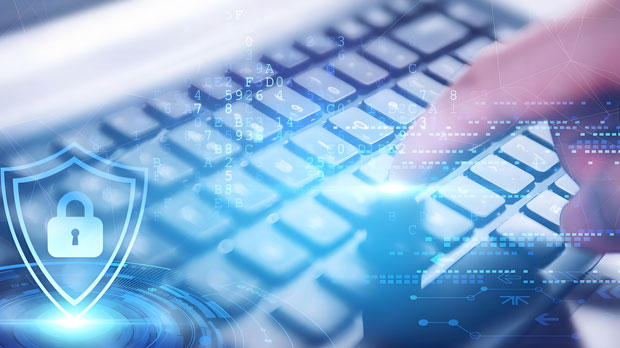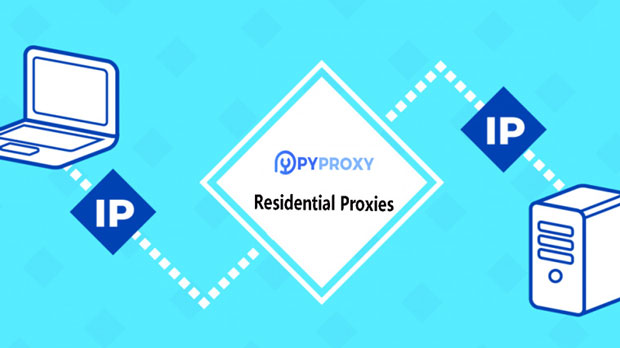Wireless proxies are an essential tool for improving network security, privacy, and performance. Two such proxies, PYPROXY and Blockaway Proxy, offer distinct solutions for different use cases, especially in the context of mobile devices. As the need for secure and efficient mobile networking continues to rise, these proxies are designed to offer robust support for mobile users. This article explores how PyProxy and Blockaway Proxy function in a wireless proxy setup, with a special focus on their mobile device compatibility. By analyzing their features, performance, and application in real-world scenarios, we aim to provide valuable insights to users seeking optimal proxy solutions for their mobile devices. What are PyProxy and Blockaway Proxy?Before diving into their support for mobile devices, it is important to understand the basic functionalities of PyProxy and Blockaway Proxy. Both of these are tools designed to manage internet traffic and secure the browsing experience by rerouting requests through remote servers. However, each comes with its own set of advantages and functionalities.- PyProxy: PyProxy is a Python-based proxy tool that allows users to configure, manage, and maintain secure proxy servers. It is lightweight, highly customizable, and often used in scenarios where users need to manage their traffic flow, mask their IP addresses, and ensure privacy. The proxy also offers a high level of integration with different software solutions, making it a popular choice for developers.- Blockaway Proxy: Blockaway Proxy, on the other hand, is a security-focused proxy solution that specializes in blocking unwanted content, such as advertisements, trackers, and other malicious threats. It also offers encryption and other privacy-enhancing features that make it suitable for users looking for a comprehensive proxy solution.Both proxies offer solutions for mobile devices, but their compatibility and performance can vary depending on the specific needs of the user. Let’s explore how each of these proxies supports mobile devices.Mobile Device Compatibility: PyProxyMobile devices have become essential tools for everyday tasks, and their reliance on a stable and secure internet connection is critical. The integration of proxies, like PyProxy, into the mobile ecosystem offers several advantages. However, there are also specific challenges when implementing PyProxy on mobile devices.1. Performance: PyProxy's Python-based architecture allows it to perform efficiently when properly configured. On mobile devices, where resources like CPU and memory are limited, PyProxy can be optimized to ensure that mobile apps and browsing services work smoothly without noticeable lag. However, users must ensure that the server's resources are adequate for handling mobile requests.2. Customization: One of PyProxy’s main advantages is its flexibility. Mobile users can configure the proxy to their exact needs, from changing the IP address to routing traffic through specific channels. This flexibility is valuable for developers and advanced users who need fine-grained control over their mobile proxy settings.3. Encryption and Privacy: While PyProxy supports encryption features that can protect users' data, mobile devices need to have additional security layers, such as SSL/TLS certificates, to ensure data protection during transmission. PyProxy supports these features, but users may need to implement additional security measures on their devices to maximize protection.4. Compatibility with Mobile OS: PyProxy can be used with both Android and iOS devices. However, due to iOS's closed system, certain advanced features may be restricted. On Android, PyProxy can be fully utilized with third-party apps or by directly modifying the network settings to route traffic through the proxy.5. Limitations: One challenge with PyProxy on mobile devices is the reliance on a server-based setup, which can introduce additional complexity for less experienced users. Additionally, mobile devices have limited resources, which may make it difficult to run certain proxy configurations effectively. However, with the right configurations, PyProxy can still function optimally on mobile platforms.Mobile Device Compatibility: Blockaway ProxyBlockaway Proxy provides a different set of functionalities compared to PyProxy, but its support for mobile devices is just as crucial for users who prioritize security, privacy, and ad-blocking capabilities.1. Ad and Tracker Blocking: One of the standout features of Blockaway Proxy is its ability to block intrusive ads and prevent tracking from third-party services. This feature is incredibly useful on mobile devices, where advertisements can significantly impact user experience, consuming bandwidth and slowing down performance. Blockaway Proxy can effectively prevent this while maintaining a smooth browsing experience.2. Encryption: Like PyProxy, Blockaway Proxy offers encryption, but it takes this a step further with end-to-end protection for all traffic. This ensures that data transmitted via mobile devices is secure, preventing unauthorized access and keeping user data private.3. Integration with Mobile Apps: Blockaway Proxy is often integrated into mobile apps, providing an easier setup process for users. It works seamlessly with popular browsers and other apps, offering a plug-and-play experience for mobile users. This makes it a more accessible option for general users who do not want to dive into complex configurations.4. Performance: Blockaway Proxy’s ability to filter out unwanted content and block malicious traffic does not significantly impact the performance of mobile devices. It is designed to be lightweight and efficient, even on devices with limited processing power. Users can continue to browse or use apps without a noticeable slow-down, which is crucial for mobile device use.5. Battery and Resource Consumption: Mobile devices are battery-powered, and proxies can sometimes drain power due to their continuous operation. Blockaway Proxy is optimized to minimize battery usage, making it a more battery-friendly option for users who rely on their devices throughout the day.6. Compatibility: Blockaway Proxy supports both Android and iOS platforms, offering a wide range of integration options. Its ease of setup and user-friendly interface make it an attractive choice for those who prioritize security without dealing with technical complexities.Which Proxy is Better for Mobile Devices?When choosing between PyProxy and Blockaway Proxy for mobile devices, several factors need to be considered, including user expertise, device capabilities, and the specific needs of the mobile user.1. For Advanced Users and Developers: PyProxy offers unparalleled flexibility and control. It is ideal for users who want to fine-tune their proxy settings and are comfortable with configuration. Developers who need to handle complex use cases will appreciate the customization PyProxy offers.2. For General Users: Blockaway Proxy is a better choice for users who want a hassle-free, secure browsing experience. Its ease of use, combined with its strong security and ad-blocking features, makes it a great solution for everyday mobile users who prioritize privacy and performance.3. Security and Performance: Both proxies offer robust encryption and security features, but Blockaway Proxy may have an edge in terms of user-friendliness and mobile-specific optimizations. PyProxy, on the other hand, might be more suitable for advanced users who need to modify or customize their proxy environment.Both PyProxy and Blockaway Proxy offer valuable support for mobile devices in wireless proxy setups, each catering to different user needs. PyProxy is best suited for advanced users and developers who require customization and flexibility, while Blockaway Proxy is designed to provide a simple, secure, and efficient experience for general mobile users. By considering the specific requirements of the user, including security needs, mobile device performance, and ease of use, both proxies can serve as effective solutions for enhancing mobile internet browsing security and privacy. Understanding the capabilities of each proxy and choosing the right one can lead to a better, more secure mobile experience, whether you are using your device for personal browsing, app usage, or development tasks.
Sep 03, 2025



































































